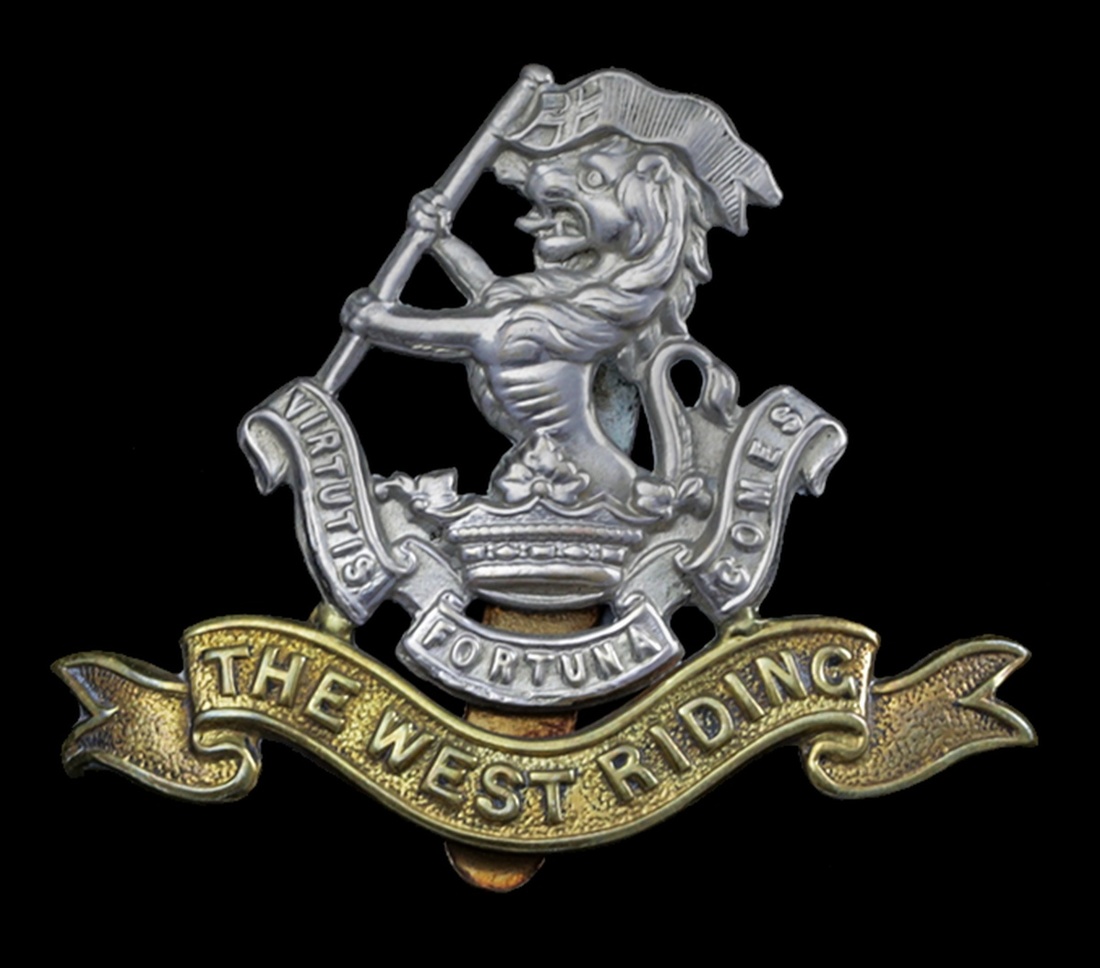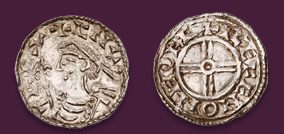Auction: 19003 - Orders, Decorations and Medals
Lot: 382
Family group:
An outstanding North West Europe 'Nijmegen Bridge 1944' Immediate M.M. group of five awarded to Lance Corporal W. L. Hawkins, Duke of Wellington's (West Riding) Regiment, who took on the 'suicidal task' of beating back several determined attacks by the fanatical 6th German Parachute Division at Haalderen in December 1944 - his 'brilliant stand' with a 2-inch mortar knocked out a Spandau with his first shot and sent the enemy into flight; having dashed back to cover he next jumped onto a Bren and killed another Spandau gunner who had continued to put up resistance - the action eventually secured some 110 prisoners for the regimental 'bag'
Military Medal, G.VI.R. (1078129 L. Cpl. W. L. Hawkins. D.W.R.), in its original named card and despatch box, complete with dedicated Buckingham Palace enclosure and torn postage envelope, to 'W. L. Hawkins, Esq. M.M., 71 Lesbourne Rd, Reigate, Surrey'; 1939-45 Star; France and Germany Star; Defence and War Medals 1939-45 Star, with the enclosure giving entitlement for '4-0.', in named card box of issue, extremely fine, all but mint
Three: Sergeant W. F. Hawkins, Queen's (Royal West Surrey) Regiment
1914-15 Star (G-5873 Pte. W. F. Hawkins. The Queen's R.); British War and Victory Medals (G-5873 Sjt. W. F. Hawkins. The Queen's R.), good very fine (8)
M.M. London Gazette 5 April 1945, the recommendation for an Immediate award states:
'At Haalderen 7566 at 0300hrs on December 4th 1944 the Germans launched a strong attack on the 7 DWR positions with the intention of demolishing the Nijmegen Bridge. Two enemy companies penetrated the outer defences and were advancing across the flank of 13 Platoon, 'C' Company, which opened fire and caused significant casualties. The Germans then detached a force to silence the platoon which was by the fire of bazookas, spandaus, grenades and light mortars. After a number of men were killed and wounded, L/Cpl Hawkins volunteered to crawl out of the back of the house which the platoon was occupying and counter attack with his 2 inch mortar.
Although the ground was completely open and mostly under flood, L/Cpl Hawkins worked his way round the house until he could see the Germans, who were firing at the house from a distance of 50 yards. L/Cpl Hawkins fired his mortar at low angle at point blank range, and with his first shot silenced one spandau. Another spandau and bazooka then turned their fire on L/Cpl Hawkins who kept firing and eventually silenced another spandau. When he had fired all the ammunition he could carry, 12 rounds, L/Cpl Hawkins withdrew and the enemy ceased their fire.
The brilliant stand of this platoon completely demoralised the enemy, 110 of whom were taken prisoner within 100 yards of the platoon. It was only through this newly appointed junior NCO's initiative and supreme courage in taking on what seemed a suicidal task that the platoon was able to continue its resistance in face of greatly superior numbers.'
William Leslie Hawkins was born around 1910 and was educated along with his two brothers on Holmesdale Road, Reigate and had worked for twelve years as a Machine Minder at the Surrey Fine Art Press, Redhill before enlisting in the Duke of Wellington's (West Riding) Regiment (Surrey Mirror 9 February 1945, refers).
Serving with the 7th Battalion, Hawkins would likely have served in Iceland from 1940-42, before landing in Normandy on 12 June 1944, D Day +7. They gave valuable service in the fight for Caen, during the Second Battle of the Odon and during the battles to secure the channel ports, including La Havre. With disappointment and defeat at Arnhem, Hawkins and his comrades were stationed at Haalderen on the Nijmegen bridgehead during late November 1944. The start of December would trigger determined enemy attacks with the aim of blowing the bridge. In the early hours of 1 December, heavy artillery, mortar and spandau fire came in and it was clear a concentrated attack was in the offing. They would come face-to-face with the 6th German Parachute Division and units of the 16th Parachute Regiment. All the actions were fought at close quarters, with widespread flooding making conditions particularly appalling. During the early hours of 3 December, newly promoted, Hawkins volunteered and was sent into action. A military observer in the Surrey Mirror takes up the story:
'"It was a most unpleasant order, both for me to give and for them to carry out." said a Platoon Commander, as he described how, when the house which was his platoon position, was completely surrounded by a strong Boche force which attacked during the night, he deemed it necessary to send a mortar detachment of two men into the area which was being swept with machine-gun fire.
"You see our platoon position was entirely surrounded and it became clear that unless something was done to prevent the enemy from coming closer the entire platoon would be wiped out, and the important position which we were holding would be taken, which would have had serious consequences for the battalion. I therefore decided that it was necessary in the greater number that these two men's lives should be risked.
The main force of the enemy were in and around a house only a short distance away, and a Spandau set up in the doorway had us completely pinned down. I told the mortarmen, Lance-Corporal Hawkins and Private Cronley, to attempt to get into an orchard near to the house which we were in, and try to put the Spandau out of action with their mortar - I must confess I was very much afraid that I might never see them again."
Lance-Corporal Hawkins was asked how he felt when he received the order to carry out this distinctly unpleasant task.
"Well, I can't say that the idea appealed tremendously, but the job had to be done, so we got on with it. We crawled inch by inch using every bit of cover that was available, and there was precious little, until at last we reached the orchard. There we quickly set the mortar up and fired. Luckily our aim was good, and the first bomb scored a hit on the building. Immediately the Jerries started to stream out amidst the hail of mortar bombs, which we continued to put down. When all our ammunition was used up, we made a quick dash for the house, which we managed to reach in safety.
On getting back to the house, I relieved one of our Bren gunners and fired a burst at the Spandau gunner still firing from the doorway. At once the gun ceased firing; and later we found the Boche gunner dead beside his gun. Once the main force was broken up we had little trouble in clearing the rest out of our immediate area."'
Hawkins wrote to his parents, describing how the action was a matter of 'kill or be killed - and that there was little pleasant in it.' He would have finished the war fighting during the liberation of Arnhem, 12-16 April 1945. They had originally been intended to be utilised during Phase 3 of the attack but were called in for Phase 1 as the action unfolded to support the 2nd Battalion, South Wales Borderers, whose landing craft had drifted downstream as they were prepared for landing. On 14 April they faced a vast counterattack by the Dutch volunteers to the 34th SS Volunteer Grenadier Division Landstorm Nederland which was beaten off and occupied the zoo on 15 April. Finding a live polar bear, which was taken into their care, it was offered up to the Brigade Commander, who politely declined.
William F. Hawkins served with the 1st Battalion, Queen's (Royal West Surrey) Regiment in France from 13 October 1915. During the course of the war he 'suffered several wounds, and now, after working at Adam's Stores, Reigate, for forty years, is suffering with a spinal affliction that he fears will prevent him from working again' (Surrey Mirror 5 January 1945, refers). His three sons all served during the Second World War.
Subject to 20% VAT on Buyer’s Premium. For more information please view Terms and Conditions for Buyers.
Sold for
£2,200
Starting price
£2200









